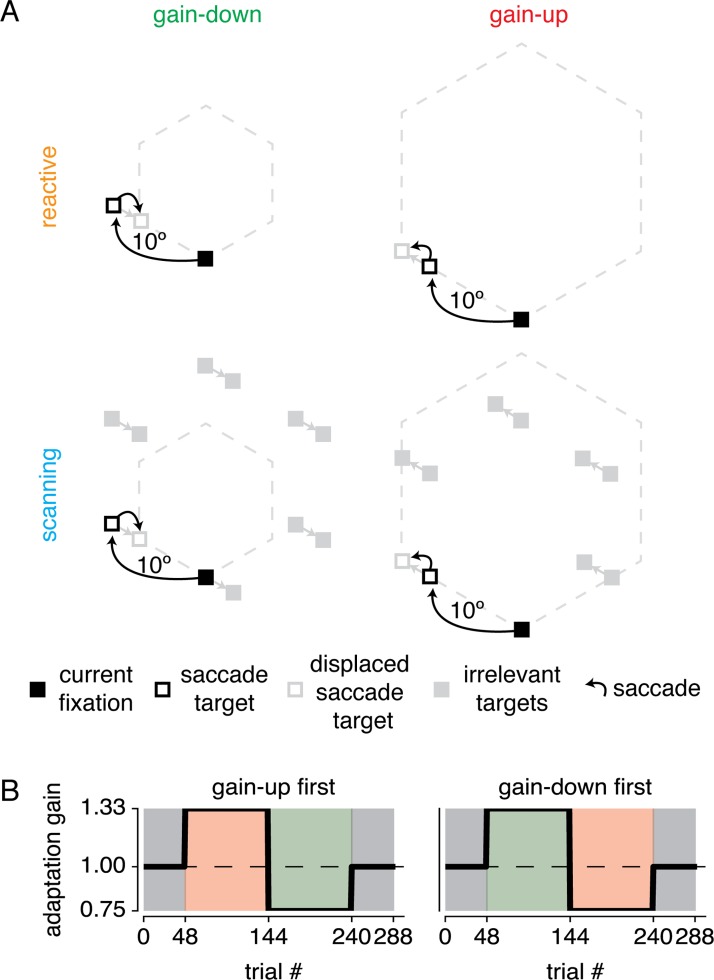Fig 1. Experimental design.
(A) Participants made saccades to targets around a clockwise hexagonal path. In the reactive saccade condition, a single target sequentially jumped along the corners of the hexagonal. Subjects were instructed to simply follow the target. In the scanning saccade condition, all targets were always presented and subjects were instructed to saccade to the next clockwise target when the currently fixated target flashed. During the saccade, targets jumped either further away from (gain-up) or closer to (gain-down) previous fixation. Participants sat in full darkness and all stimuli were filled red squares. Note that dotted outline and different appearance of squares are for illustrative purposes only. (B) The experiment was made up of an initial baseline block, two adaptation blocks and a final baseline block. All participants completed two experimental sessions per saccade type, switching the adaptation block orders between gain-up and gain-down.

